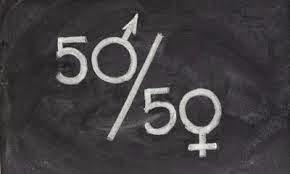
This is a link I had intended to post earlier today, in my posting about gender complementarity. And then it somehow got away from me, and I've only now remembered that I didn't include it. I'm posting it now as an addendum to my earlier posting about complementarity:
At Truthdig today, Alexander Reed Kelly takes note of a study recently published by a a team of psychologists, anthropologists, and biologists at Brunel University in London, which "challenges the commonly held assumption that human beings naturally prefer highly masculine men and highly feminine women." The study, which examines how twelve different cultures around the world perceive masculinity and femininity, "suggests that preferences for exaggerated sex-specific traits may emerge only in what the researchers called 'highly developed environments'—meaning those that are urban and densely populated."
The researchers set out to test the validity of the thesis that "preferences for exaggerated sex typicality in human faces (masculinity/femininity) reflect a long evolutionary history of sexual and social selection." As Andrew Clark of Brunel University, one of the researchers involved in conducting the study, explains, though it has often been assumed that a preference for dimorphism — for sharply distinguished "male" and "female" features in human faces — represents a longstanding feature of human cultures rooted far back in the pre-modern past, the team of researchers found that when it showed a series of digitally morphed images of male and female faces to twelve different populations, people from small-scale societies often expressed a preference for "neutral" faces rather than ones decisively sorted according to taken-for-granted gender characteristics.
Indeed, "[s]urprisingly, preferences for exaggerated sex-specific traits are only found in the novel, highly developed environments" of modern Western cultures. Clark concludes,
This data challenges the theory that exaggerated sex-specific traits were important for social and sexual selection in ancestral environments. Preferences for sex typical faces are a novel phenomenon of modern environments. It’s probably not a consistent thread in human history.
This study piques my interest for a number of reasons. In the first place, it seems to validate Michel Foucault's argument in his classic work The History of Sexuality that, with the Enlightenment, Western cultures have moved in an anti-liberating direction in some key respects in their understanding of human sexuality. Foucault argues that the Enlightenment has given modern Western cultures more tools to classify and thereby control human sexuality than those cultures had prior to the Enlightenment. Out of this tendency sprang the impulse to treat homosexuality as a pathology, for instance, something to be classified as illness and cured — an approach to the phenomenon of homosexuality that had not been present in pre-Enlightenment Western thought.
I also find the study's discoveries of interest because it seems to me that there is an inbuilt impulse in the consumerism of highly developed societies, with their hugely influential commercial and advertising sectors, to commoditize gender and sexuality — to sell products by selling gender roles. There is, built into the commercial advertising world of consumerist societies, a strong need to depict men and women in highly stereotypical ways in order to sell product.
And this impulse has resulted in the internalization of assumptions about gender, about who men are and should be and who women are and should be, in several generations whose consciousness, whose view of the world, has been almost completely overtaken by the marketing schemes of the world of commercial advertising. Those messages about who men are and should be and who women are and should be are not beamed constantly to people in less highly developed societies — though they very soon will be, via the operations of the market and internet technology.

